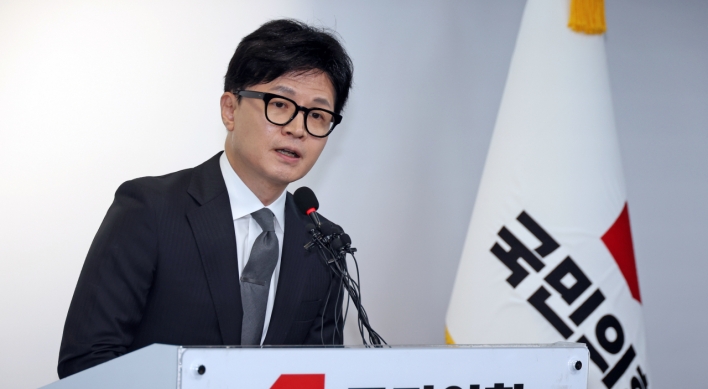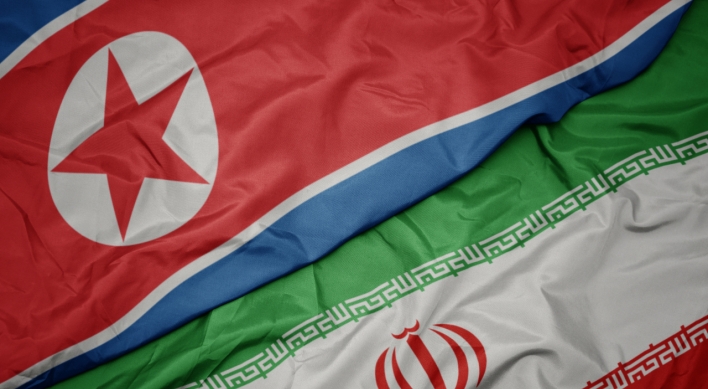Fixed indemnity health plans, or reimbursement-backed medical insurance, was the first type of health coverage in the U.S.
Under South Korean regulations on indemnity health plans, patients are eligible for reimbursement of 90 percent of medical costs not covered by state medical insurance.
These plans typically require enrollment fees and monthly premiums, which are raised every three to five years.
“I signed up for an IHP because I needed periodic treatment for my atopic dermatitis,” said Song Won-jae, a 28-year-old computer engineer.
His plan covers medical costs of over 10,000 won ($9.10) per treatment.
“Mostly my atopic treatment costs less than 10,000 won. But I would get more costly services such as laser treatments when my skin condition worsens,” he said. He is one of the 27 million Korean people who signed up for the IHP.
In the U.S. insurance market, the number of IHP holders has been decreasing, as more affordable health care plans have been introduced.
Meanwhile, Korea’s IHP market has been increasing since the early 2000s.
The Korean financial authorities issued an advanced notice of a new bill to raise the patients’ fixed personal coverage from 10 percent to 20 percent last week due to increasing moral hazard surrounding IHPs.
“The share of the cost that the patient has to provide under indemnity insurance is too low, with the result that patients receive extra medical treatments that are (mostly) paid for by insurance companies,” the FSS’ insurance supervision unit said.
“Honest patients or customers, who only receive and pay for necessary medical treatments, were hurt in the process.”
The FSS noted that hospitals often asked patients if they signed up for IHPs so that they could recommend excessive medical services.
Some patients accepted to their recommendations, although they were fully aware that their conditions did not require costly services such as a magnetic resonance imaging scan.
The revised policy will be applied to new indemnity health insurance plans that will launch after April, the Financial Services Commission said.
The FSS said that it was time to warn IHP holders who rely on reimbursement schemes, as 70 percent of the country’s medical insurance coverage comes from private insurers, with the national health insurance system accounting for the remaining 30 percent.
“The ratio used to be about 50-50 in the past,” said an FSS official, alleging that the IHP expenses were getting out of hand.
The FSS’ first move was to raise the share of costs patients have to pay, claiming that that it will result in “the immediate lowering” of insurance prices, which have been rising over the years.
But the practicality of this measure is still in doubt.
The FSS took the example of a 40-year-old male insurance customer who pays 12,000 won a month for his IHP.
After increasing the patient’s copayment rate from 10 percent to 20 percent, his monthly premium is expected to drop to 11,000 won per month, it noted.
But controversy is not expected to subside, as a slight drop in monthly premiums comes at the cost of increased treatment costs.
If the new insurance policy fails to tame rising insurance costs, the FSS will have to come up with a different approach.
The 20 percent ceiling on patients’ personal coverage rate would not be further increased, the FSS said, adding that the patients cannot be solely blamed for moral hazard.
“Insurance companies were found to lack efforts to control the insurance prices and coverage,” the FSS said, pointing out that the insurers tried to raise money for coverage by increasing monthly insurance premiums.
“If the insurance firms raise the fees far beyond the acceptable standards, the FSS will come up with additional measures,” it said.
By Chung Joo-won (joowonc@heraldcorp.com)
Under South Korean regulations on indemnity health plans, patients are eligible for reimbursement of 90 percent of medical costs not covered by state medical insurance.
These plans typically require enrollment fees and monthly premiums, which are raised every three to five years.
“I signed up for an IHP because I needed periodic treatment for my atopic dermatitis,” said Song Won-jae, a 28-year-old computer engineer.
His plan covers medical costs of over 10,000 won ($9.10) per treatment.
“Mostly my atopic treatment costs less than 10,000 won. But I would get more costly services such as laser treatments when my skin condition worsens,” he said. He is one of the 27 million Korean people who signed up for the IHP.
In the U.S. insurance market, the number of IHP holders has been decreasing, as more affordable health care plans have been introduced.
Meanwhile, Korea’s IHP market has been increasing since the early 2000s.
The Korean financial authorities issued an advanced notice of a new bill to raise the patients’ fixed personal coverage from 10 percent to 20 percent last week due to increasing moral hazard surrounding IHPs.
“The share of the cost that the patient has to provide under indemnity insurance is too low, with the result that patients receive extra medical treatments that are (mostly) paid for by insurance companies,” the FSS’ insurance supervision unit said.
“Honest patients or customers, who only receive and pay for necessary medical treatments, were hurt in the process.”
The FSS noted that hospitals often asked patients if they signed up for IHPs so that they could recommend excessive medical services.
Some patients accepted to their recommendations, although they were fully aware that their conditions did not require costly services such as a magnetic resonance imaging scan.
The revised policy will be applied to new indemnity health insurance plans that will launch after April, the Financial Services Commission said.
The FSS said that it was time to warn IHP holders who rely on reimbursement schemes, as 70 percent of the country’s medical insurance coverage comes from private insurers, with the national health insurance system accounting for the remaining 30 percent.
“The ratio used to be about 50-50 in the past,” said an FSS official, alleging that the IHP expenses were getting out of hand.
The FSS’ first move was to raise the share of costs patients have to pay, claiming that that it will result in “the immediate lowering” of insurance prices, which have been rising over the years.
But the practicality of this measure is still in doubt.
The FSS took the example of a 40-year-old male insurance customer who pays 12,000 won a month for his IHP.
After increasing the patient’s copayment rate from 10 percent to 20 percent, his monthly premium is expected to drop to 11,000 won per month, it noted.
But controversy is not expected to subside, as a slight drop in monthly premiums comes at the cost of increased treatment costs.
If the new insurance policy fails to tame rising insurance costs, the FSS will have to come up with a different approach.
The 20 percent ceiling on patients’ personal coverage rate would not be further increased, the FSS said, adding that the patients cannot be solely blamed for moral hazard.
“Insurance companies were found to lack efforts to control the insurance prices and coverage,” the FSS said, pointing out that the insurers tried to raise money for coverage by increasing monthly insurance premiums.
“If the insurance firms raise the fees far beyond the acceptable standards, the FSS will come up with additional measures,” it said.
By Chung Joo-won (joowonc@heraldcorp.com)



![[Exclusive] Korean military set to ban iPhones over 'security' concerns](http://res.heraldm.com/phpwas/restmb_idxmake.php?idx=644&simg=/content/image/2024/04/23/20240423050599_0.jpg&u=20240423183955)

![[Graphic News] 77% of young Koreans still financially dependent](http://res.heraldm.com/phpwas/restmb_idxmake.php?idx=644&simg=/content/image/2024/04/22/20240422050762_0.gif&u=)



![[Pressure points] Leggings in public: Fashion statement or social faux pas?](http://res.heraldm.com/phpwas/restmb_idxmake.php?idx=644&simg=/content/image/2024/04/23/20240423050669_0.jpg&u=)









